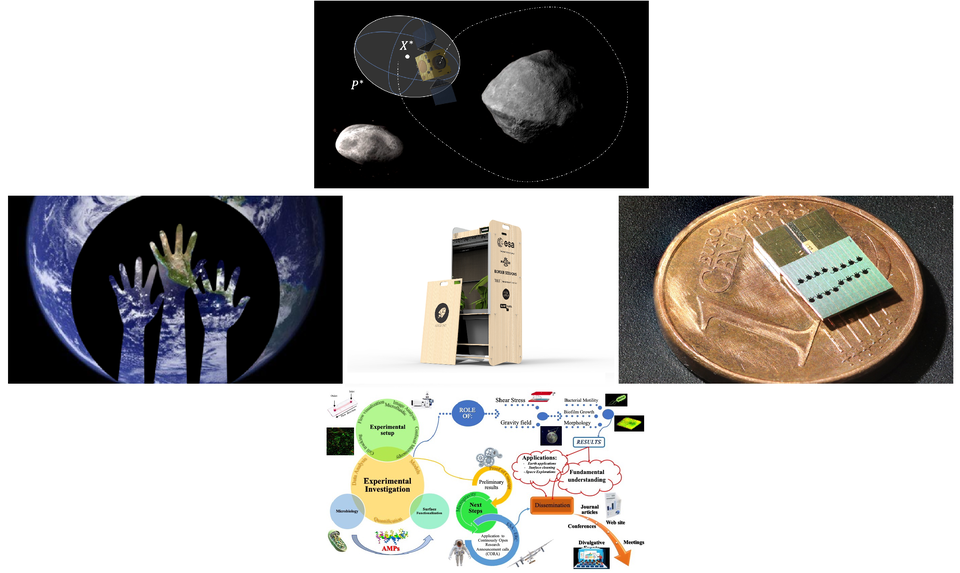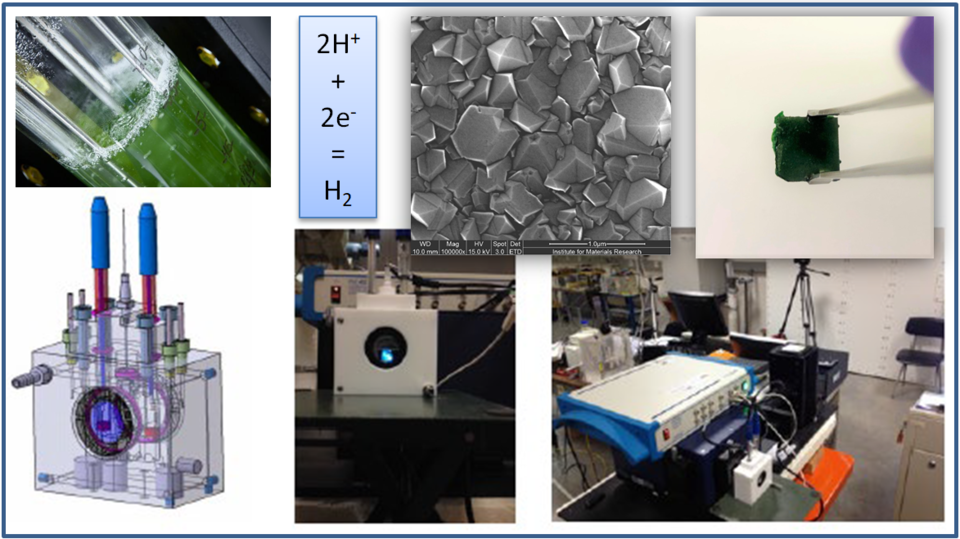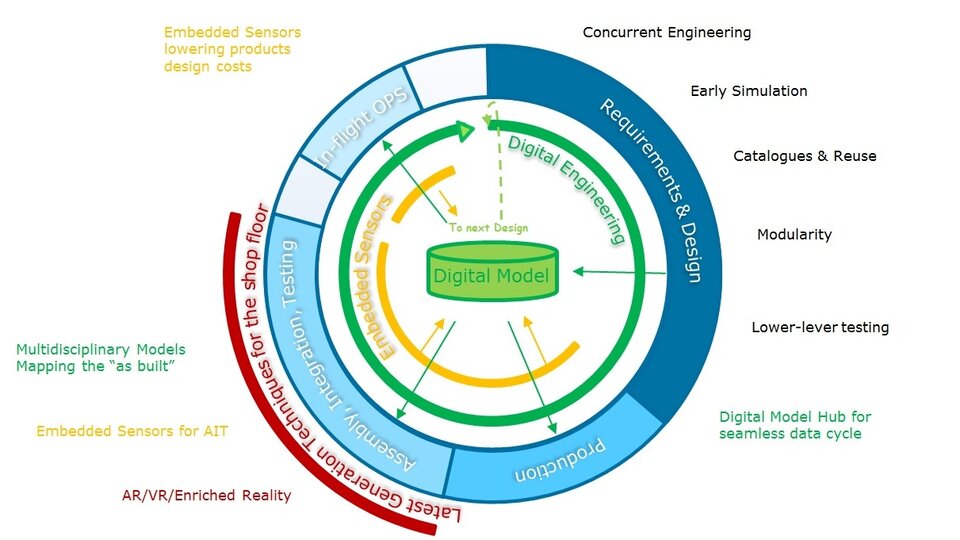Implemented OSIP ideas — April 2022
ESA's Open Space Innovation Platform (OSIP) seeks novel ideas for new space research activities. Campaigns and Channels invite solutions to specific problems or ideas on more general topics, with those run by Discovery & Preparation, including the Open Discovery Ideas Channel, specifically looking for ideas that could be implemented as system studies, early technology developments, or PhD or postdoc research co-funded by ESA and a university.
Open Discovery Ideas Channel

In April 2022, the following ideas were implemented through the Open Discovery Ideas Channel.
--------------------------------------------------
EO4HR: Earth Observation for Human Rights
University of Strathclyde
Historically, satellite data have been successfully used to uncover major violations of human rights: exposing war crimes in Sudan, Syria and Yugoslavia; locating mass graves sites and prison camps; and planning the deployment of humanitarian aid. This co-funded research project aims to expand the possible application areas of satellite data in mapping, monitoring violations and protecting human rights while assessing the necessary standards and procedures to use satellite data as evidence in human rights litigations.
--------------------------------------------------
Role of gravity and shear stress on bacterial motility and biofilm morphology
University of Naples Federico II
Read more about this public idea in OSIP
--------------------------------------------------
Distributed research infrastructure for plant characterisation
Dutch Coast BV
Read more about this public idea in OSIP
--------------------------------------------------
Stochastic continuation for space trajectory design in uncertain environments
University of Surrey
An essential part of any spacecraft mission is the design, planning, and operation of robust and fuel-efficient trajectories that can fulfill mission requirements whilst coping with the harsh space environment. This co-funded research project aims to implement and develop novel procedures that could revolutionise the trajectory design process by accounting for uncertainties from the very beginning of the design phase.
--------------------------------------------------
Narrow linewidth frequency agile integrated photonic lasers for space
DEEPLIGHT
Read more about this public idea in OSIP
--------------------------------------------------
Generic design methodology for a boundary layer laminarisation strategy
Von Karman Institute for Fluid Dynamics
The design of reusable/expandable launchers, any type of (re-)entry vehicles, and propulsion units is currently strongly governed by aerothermodynamic considerations. Performances could be improved by altering the shape of a vehicle so that air flows around it more smoothly. This early technology development project aims to demonstrate the aerodynamic benefits of a geometrical optimisation technique on the design of high-speed vehicles.
--------------------------------------------------
Making XR a reality

The following ideas were implemented through the Campaign for new ideas to make XR (extended reality) a reality.
--------------------------------------------------
Extended reality lab for Mars experiments (Mars Xlab)
Sirin Orbital Systems AG
This early technology development project aims to recreate the Martian surface through a virtual XR-based Mars laboratory. Artificial intelligence will be used to improve the resolution of images taken by Mars satellites and obtain surface features based on images taken by Mars rovers. The virtual lab will be validated using a physical Mars-like environment on Earth, and researchers will continue to improve it using real data from Mars satellites and rovers. The final product – ‘Mars Xlab’ – will enable virtual testing of future human and robotic exploration of Mars.
--------------------------------------------------
Lightfield-enhanced immersive teleoperation system for space station and ground control
VTT Technical Research Centre of Finland
Read more about this public idea in OSIP
--------------------------------------------------
The Virtual Mission Control Room (VMCR)
Julius Maximilian University of Würzburg
Read more about this public idea in OSIP
--------------------------------------------------
Sustainable hydrogen production

The following idea was implemented through the Campaign for new ideas for sustainable hydrogen production technologies.
--------------------------------------------------
Sustainable hydrogen production in space by radiation hard cyanobacterial biofilms in a photoelectrochemical (PEC) system using boron-doped diamond (BDD) electrodes
Swiss Federal Laboratories for Materials Science and Technology (Empa)
Read about this public idea in OSIP
--------------------------------------------------
Model-Based System Engineering

The following idea was implemented through the OSIP Model-Based System Engineering Campaign.
--------------------------------------------------
Digital Twin for (AOCS) hardware unit modelling: Definition of TRL scale
Thales Alenia Space
Technology Readiness Levels (TRLs) are a type of measurement system used to assess the maturity level of a particular technology. This study will define the TRL scale, and corresponding detailed milestones/achievements/products, of the hardware unit simulator models used in the MBSE development cycle. It will be inspired by the TRL definition for the equivalent hardware models.
--------------------------------------------------















 Germany
Germany
 Austria
Austria
 Belgium
Belgium
 Denmark
Denmark
 Spain
Spain
 Estonia
Estonia
 Finland
Finland
 France
France
 Greece
Greece
 Hungary
Hungary
 Ireland
Ireland
 Italy
Italy
 Luxembourg
Luxembourg
 Norway
Norway
 The Netherlands
The Netherlands
 Poland
Poland
 Portugal
Portugal
 Czechia
Czechia
 Romania
Romania
 United Kingdom
United Kingdom
 Slovenia
Slovenia
 Sweden
Sweden
 Switzerland
Switzerland
























